Follow These 5 Resume Rules For A Successful Job Search

I was unbelievably proud.
Finally, I could put those three coveted letters after my name: P-h-D.
On my resume, I was excited to list all of the accomplishments and publications I had landed during my time as a student.
Anyone who read this impressive document would know exactly what I was capable of – I was going to be an industry superstar.
The final product was a 5-page-long resume.
It was an imposing block of dense technical terms and academic titles with very little unused space (to emphasize the great volume of my accomplishments, of course).
This was a lot of work to put together!
I took that long resume and started sending digital copies to companies with job openings that piqued my interest.
Yet as the weeks passed, I heard nothing.
Weeks became months, and no companies were reaching out.
Was I really qualified for these industry positions after all?
Discouragement set in, and I started sending out fewer and fewer resumes.
Maybe I didn’t have the right skills – maybe my PhD was a total waste of time and effort.
If they weren’t hiring me, then who on earth were they hiring?
By now, I’ve learned the answer.
It’s even kind of funny to look back on how ridiculous my approach was.
Industry wasn’t ignoring me because I was unqualified – they were ignoring me because my resume was an unreadable bulk of wasted kilobytes.
In fact, I’m not even sure a human being ever saw my grand novel of a resume.
In most–if not all–cases, I was getting rejected by a computer!
It was time to take a new approach and refine my resume into the proper format.
I had to play the industry game, and if you want a job, you have to do it too.
So what exactly are the ingredients of a superb industry resume?
First, let’s talk about what they aren’t.
Why PhD Resumes Get Thrown Out

Are you submitting your resume to online job postings?
You might be surprised to learn that your resume is never even seen by a human being.
98% of Fortune 500 companies use applicant tracking software, according to Jobscan.
Companies (especially the really big ones like Google and Apple) receive many thousands of resumes every week.
The only way their hiring departments can be functional is by using tracking software to weed out unqualified candidates.
This puts applicants in kind of a tough spot – optimize your resume to get through the tracking software or get used to rejection.
Even highly qualified candidates face this issue.
Baruch College has reported that an unsettling 70% of all applications are never even seen by a person.
It can be as simple as not having the right keywords – the software doesn’t see what it needs to see, and your application is automatically rejected.
Here are a couple of key items to remember during your job search:
- If you submit a resume and don’t hear back from an employer, it does not mean that you aren’t qualified.
- You can bypass tracking software using one of the most powerful tools in networking: a referral.
Regardless of how you apply to a job, your resume absolutely must be optimized for passage through software screening and meet industry’s standards.
Follow these 5 Resume Rules to Land the Interview
In a certain sense, writing an industry resume is the same as writing an article or a novel…
You have to remember your audience.
You are not applying for a position in academia – you’re addressing an industry employer, and they don’t think in the same ways.
What does industry look for on a PhD’s resume?
How can you improve your chances of scoring an interview?
Let’s cover the 5 resume rules that get PhDs hired.
Rule # 1: Don’t overwhelm the employer – keep your resume clean and readable.
Are you a stickler for details?
Many PhDs are – they have to be in order to succeed in academia.
But have you ever minimized the font on your resume just to fit in that last bullet point?
If you want to land an interview, these inconsistencies have to stop.
PhDs like to put way too much information on a resume, making it virtually unreadable.
Your resume needs to be clean, inviting, and straightforward.
A hiring manager should have a very easy time skimming your resume – if it’s too dense, they won’t bother with it.
Think of this from the employer’s perspective…
How many resumes do they have to get through just to find worthy candidates?
Imagine you’re a manager reviewing the 37th resume of the day, and the first thing you see is a huge wall of text that will take you half an hour to parse through.
Do you know what the hiring manager does with that resume?
They get rid of it – they file it away, delete it, or toss it in the trash.
As a PhD, you probably have a massive range of skills and accomplishments to highlight, but you need to be more selective about what you include on your resume.
Which parts of your experience are most relevant to an employer?
Once you determine this, put those items on your resume.
Then you need to think about formatting.
Your resume should feature clear spaces between sections and lots of white space.
Use that white space to make your most important transferable skills stand out.
Otherwise, they get lost in a jungle of irrelevant text.
Rule #2: Get past the tracking software – use bullet points to emphasize results.

Does your resume have bullet points?
It certainly should.
Not only that, but your bullet points should feature results of some kind.
Employers hire people who can achieve results – people who value outcomes and demonstrate a results-oriented attitude.
Too often, PhDs merely list things they’ve researched or projects they’ve pursued.
What does an industry employer think about that?
Nothing, because he or she has already moved on to the next resume.
How will your PhD or postdoc studies serve the employer?
Find ways to describe your experience that make you valuable to industry – make employers care.
And whenever possible, quantify any results you list.
Numbers will really make that resume pop, and they’ll demonstrate how much you value results.
Some PhDs hear this and protest, “I don’t have any results!”
But that’s not really true, is it?
As a PhD, you know all about how to move projects forward and create results.
This is a PhD’s “bread and butter,” so just look at your academic projects from an employer’s perspective and decide what would be important to them.
Employers want to know what you’ve accomplished, so list as many measurable achievements as you can.
Rule # 3: Forget about academic titles – highlight transferable skills.

What words are you currently bolding on your resume?
A lot of PhDs bold terms like:
- Postgraduate Researcher
- Postdoctoral Fellow
- Graduate Student
Everyone who reads your resume is going to see those cool titles that you worked so hard to achieve, and that creates a problem.
Tracking software likes to scan your resume and check whether it hits certain keywords – these keywords are not your academic titles.
Artificial intelligence doesn’t know what a “postdoctoral fellow” is, and that’s not the kind of text it’s programmed to seek.
But even if you make it past the software, it’s the employer’s turn to take a look.
That employer probably doesn’t have a PhD – they’re going to find your academic titles strange and mysterious.
Or worse: Pompous and irritating!
Your academic experience is transferable, but you have to prove it.
Do a little research and discover which transferable skills are important for the company or job opening you’re applying to.
Then write those skills on your resume and justify them in the context of your academic training.
Lastly, bold those skills – all of them.
These skill keywords will then be more heavily weighted by the software, upping your chances of getting noticed – and the employer’s eye will pick them out too.
Your bolded keywords should say things like:
- Project Management
- Leadership
- Data Analysis
Underneath the keywords, you can add something like, “Experience gained as a Postdoctoral Fellow at [insert university here].”
This way, you’re putting your most important transferable skills front and center.
At the same time, an employer can read about where you were and what you were doing while you picked up those transferable skills.
Rule # 4. Don’t forget the “hobbies” section – use it to avoid getting stereotyped.
It’s easy to assume that the “hobbies” section of your resume is disposable, but don’t fall for this line of thinking.
And never delete this section for the sake of listing more technical skills/bullet points.
Hobbies are actually a very important part of a good resume.
Want to avoid being seen as a PhD stereotype?
The hobbies section is an effective way of doing just that.
A well-rounded hobbies section shows the employer you’re not the PhD stereotype – a dry, stuffy science robot.
Use your hobbies section to outline your most interesting personal pursuits, and emphasize those that have a social element.
Especially any hobbies that place you in a leadership role.
During interviews, hiring managers like to use this section as an ice breaker – it’s how they start a conversation and get a feel for your personality.
Community engagement or volunteer experience are especially valuable in this section.
But however you fill it out, keep in mind that it’s a tool for building rapport with your interviewers, and that can be a major asset in standing out as a candidate.
Rule # 5. Strike a balance – mind your keyword density.
Keywords aren’t just for tracking software – when a hiring manager is reading your resume, keywords will quickly indicate that you have the right skills for the job.
Employers don’t read and memorize every part of your resume – they have to read a ton of these things.
So if you’re not including keywords, you’re not showcasing yourself – the employer may not notice that you’re the right fit.
Make your most important skills stand out by writing them throughout your resume a few times.
This way, no matter where an employer is skimming in your resume, they’ll see the skills you’ve listed.
Which skills do you need to list?
You’ll learn that by thoroughly reading the job posting.
Locate any terms or skills that are used multiple times in the job description – these words you need to repeat throughout your resume.
You can even collect a few different job postings for the type of position you’re applying for, and use these to figure out what words the employer is looking for.
Now that you know the rules, building a top-notch resume should be simple! Don’t overwhelm the employer – keep your resume clean and readable. A block of text is too intense when the reader has so many resumes to look at. Get past the tracking software – use bullet points to emphasize results. Bullet points are a highly readable way to highlight what you’ve achieved. Forget about academic titles – highlight transferable skills instead. Employers and tracking software don’t know what to make of these “strange” terms. Don’t forget the “hobbies” section – use it to avoid getting stereotyped as some kind of PhD “robot.” And finally, strike a balance – mind your keyword density.
If you’re ready to start your transition into industry, you can apply to book a free Transition Call with our founder Isaiah Hankel, PhD or one of our Transition Specialists. Apply to book a Transition Call here.

ABOUT ADITYA SHARMA, PHD
Aditya Sharma, PhD, earned his advanced degree at the University of Toronto, Canada. Now, he combines his passion for all things STEM with keen business acumen, and he works as a scientific consultant at a top Canadian consulting firm.
































